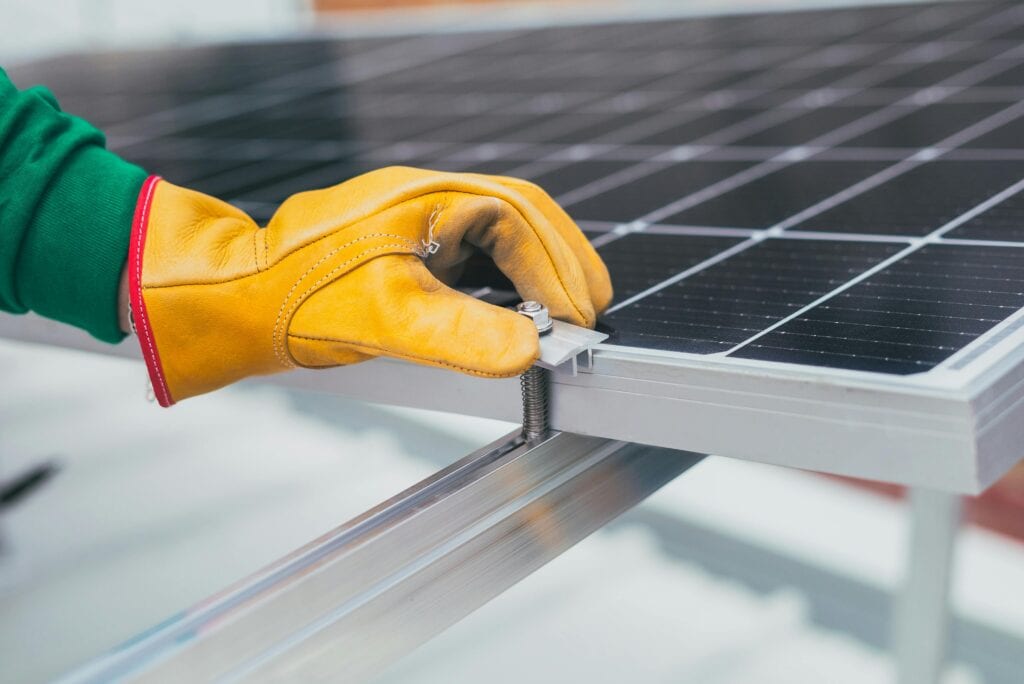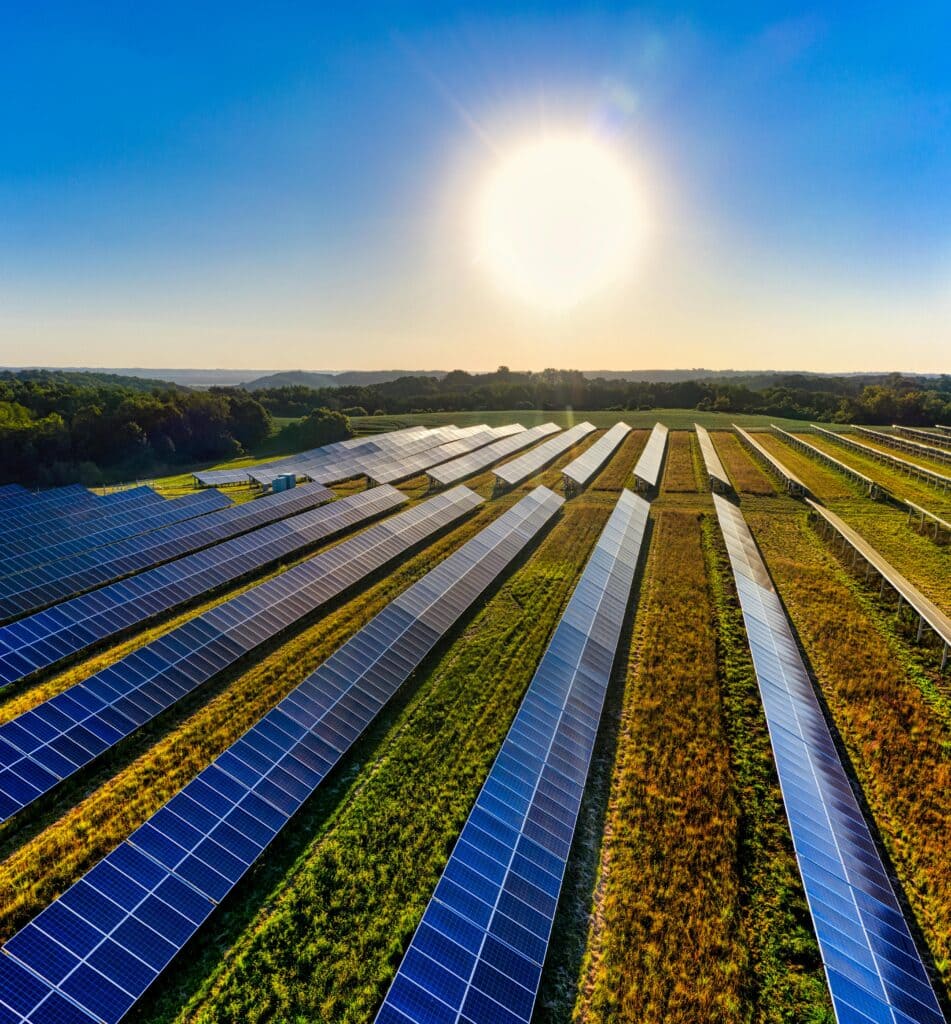

Evolution of the Photovoltaic Sector: Growth Prospects in Spain and Worldwide
Solar photovoltaic energy has evolved from an emerging technology into one of the main sources of electricity generation globally. Currently, the pressure for energy transition and reducing dependence on fossil fuels has driven an unprecedented expansion of renewable energies, with solar photovoltaics being one of the most dynamic.
Spain: Leading the Photovoltaic Transition in Europe
In recent years, Spain has reaffirmed its position as one of Europe’s leaders in renewable energy development, with solar photovoltaic energy playing a prominent role. Since the repeal of the “sun tax” in 2018, the country has experienced unprecedented growth in photovoltaic capacity installation. As of the end of September 2024, the installed and grid-connected solar capacity exceeded 23 GW, according to data from Red Eléctrica Española (REE), with a forecast of reaching 76 GW by 2030 (including 19 GW for self-consumption), as outlined in the National Integrated Energy and Climate Plan (PNIEC).
This growth has been driven by several key factors:
Favorable Climatic Conditions
Spain benefits from over 2,500 hours of sunlight per year across much of its territory, making it one of the best locations for solar energy utilization in Europe.
Government Support
Energy policies, such as the Climate Change and Energy Transition Law, have facilitated the development of large-scale projects as well as residential and industrial self-consumption.
Private Investments
The combination of more flexible regulatory frameworks and long-term profitability has attracted significant foreign and domestic investment.
Additionally, the renewable energy sector is one of the most promising in terms of job creation. It is estimated that by 2030, the sector could generate over 135,000 direct jobs in Spain, spanning infrastructure construction, maintenance, and operation of photovoltaic plants.
In Spain, alongside the growth in solar energy, 22 GW of storage capacity is also being developed for 2030, which is crucial for integrating renewable energies and managing intermittency.
Global Outlook: Photovoltaic Energy at the Forefront of the Energy Transition
Globally, the growth of the solar photovoltaic sector has been remarkable. According to SolarPower Europe, over 1,000 GW of photovoltaic capacity was installed worldwide by 2023-2024, with projections from the International Energy Agency (IEA) indicating that this figure could reach 4,000 GW by 2030.
This growth is primarily driven by three major regions:
China
As the largest producer and consumer of solar energy, China accounts for over 40% of global installed capacity. By 2030, China is expected to exceed 1,200 GW of installed capacity as part of its carbon neutrality plan for 2060.
United States
With over 100 GW of installed photovoltaic capacity, the U.S. is another major global player. The Biden administration has promoted initiatives like the Inflation Reduction Act, which incentivizes solar project development.
European Union
Despite its dependency on fossil fuels, Europe has accelerated its shift toward renewables, partly due to the energy crisis stemming from the war in Ukraine. European solar capacity is estimated to reach 600 GW by 2030, with Germany, Spain, and the Netherlands leading the expansion.
According to the IEA, global renewable capacity grew by 50% in 2023 compared to 2022, adding nearly 510 GW of new capacity. Solar photovoltaic energy accounted for three-quarters of this increase, with China leading the way, installing as much solar capacity as the entire world did in 2022. Historic highs were also recorded in Europe, the United States, and Brazil.
The IEA projects that between 2023 and 2028, global renewable capacity could reach 7,300 GW, with solar and wind representing 95% of this growth. This unprecedented increase suggests that renewables will surpass coal as the primary source of electricity generation by early 2025. However, the IEA cautions that meeting the COP28 goal of tripling renewable capacity by 2030 will require additional effort, particularly in financing projects in emerging economies.
Technological Trends and Challenges in the Photovoltaic Sector
The photovoltaic market is constantly evolving, driven by technological innovations that enhance the efficiency and performance of solar installations.
Some of the most notable trends include:
Advances in Efficiency
Heterojunction (HJT) and bifacial solar cells have significantly increased the efficiency of converting sunlight into electricity. This improvement allows more energy to be generated in less space, which is critical for urban settings or solar plants with limited surface area.
Storage Systems
One of the main barriers to solar energy is its intermittency, but advancements in lithium-ion batteries have made it possible to store generated energy for use during non-sunlight hours. The global energy storage market is expected to grow at an annual rate of 25%, reaching 125 GW by 2030.
Durability and Corrosion Resistance
Solar installations are exposed to adverse weather conditions over decades. Corrosion, especially in coastal or humid environments, poses a significant challenge to the longevity of photovoltaic structures. Zinc-nickel-coated fasteners have proven to be an effective solution for enhancing corrosion resistance, reducing maintenance, and increasing the operational life of solar installations.
The Role of SNK SYSTEM in the Photovoltaic Sector
In this era of growth and technological advancement, SNK SYSTEM positions itself as a key player by supplying zinc-nickel coated fasteners that ensure the durability of photovoltaic installations. These products are specifically designed to resist corrosion in harsh environments, such as solar farms near coastal areas or those exposed to extreme weather conditions.
Durability is a critical factor in ensuring the return on investment for large-scale solar projects, where structures need to remain operational for at least 25-30 years. SNK SYSTEM’s high-quality fasteners not only reduce maintenance costs but also provide structural stability, contributing to the long-term reliability of solar installations.
Future Opportunities: Growth and Sustainability in the Photovoltaic Sector
The growth outlook for solar energy is highly optimistic. As technology continues to improve and costs keep falling, photovoltaics are expected to become the main source of electricity in many countries by 2050. In fact, by 2025, renewable energy is projected to surpass coal as the world’s primary source of electricity generation.
In Spain, the goals set by the PNIEC and increasing investments in renewable energy place the country in a leading position within Europe. Projections indicate that solar energy will cover over 20% of the country’s electricity demand by 2030, presenting an immense opportunity for companies in the sector, including those providing advanced fastener solutions like SNK SYSTEM.
The combination of innovation, advanced technology, and sustainability policies is driving a structural shift in the global energy system. For SNK SYSTEM, the challenge and opportunity lie in continuing to offer fastener solutions that contribute to the efficiency and durability of solar installations, playing a key role in a sustainable energy future.

